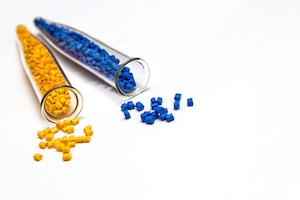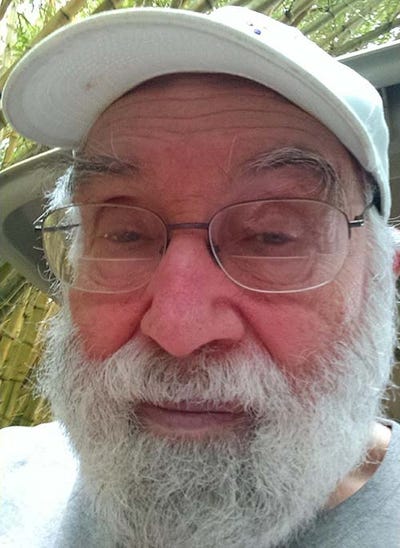Extrusion basics: Some like it hot . . . and some don’t
Avoiding heat-related problems often is the real limit to screw speed and, therefore, to the production rate.
January 11, 2017

 This month’s article is about heat. And cold. Although, there is no such thing as “cold,” just less molecular motion. But try telling that to anyone outside of the Deep South whose furnace goes out on them in the winter. And even being in the south is no assurance—it went down to 15° F in Dallas last week! That’s cold.
This month’s article is about heat. And cold. Although, there is no such thing as “cold,” just less molecular motion. But try telling that to anyone outside of the Deep South whose furnace goes out on them in the winter. And even being in the south is no assurance—it went down to 15° F in Dallas last week! That’s cold.
Turning to extrusion, we have to get the plastic hot so we can push it out through the die. That’s what the thermo in thermoplastic means. This is accomplished in several ways:
Motor power is converted to heat via friction, the primary source for most extrusions.
Heating of the barrel and head (including the die). This is normally secondary to motor power, but becomes important in the following cases:
Before starting the motor—we need a hot machine to start the screw turning, or else the system will break or (more likely) not start.
Very small machines, where screw speed has to be low to allow enough residence time for good mixing, but the low speed means less energy is drawn from the motor, so more is needed from heaters.
Some resins that need very high temperatures to melt/run, such as polycarbonates, some nylons, PPS, PEEK, LCP and the like. For such materials, barrel heating capacity must be enough to do the job, with heat transfer not impeded by air gaps or other imperfect contacts. Otherwise, the feed must be preheated.
Twin-screw extruders for rigid PVC, where the twins allow lower melt temperatures and thus pay for themselves via lower formulation costs (less stabilizer).
Extrusion coating, where high melt temperature means lower viscosity and better adhesion to paper and other substrates.
Preheating feed. This is done for drying, but is helpful even if drying is unnecessary, not so much for saving energy as for maintaining a consistent feed temperature, which may lead to better thickness control.
The melt temperature must be reliably measured and managed, because if it’s too hot, one or more of the following “evils” may occur:
Polymer chains may break, leading to weaker product, discoloration and more gels and carbonized (degraded) resin;
cooling limits may reduce the production rate, especially with air-cooled products such as blown film;
lower melt viscosity may affect sizing of pipe and profiles (by sticking to tooling), sagging of sheet or maintaining a uniform bubble in blown film; and
certain additives may react too early or too quickly (crosslinking/foaming).
Avoiding these problems is often the real limit to screw speed and, therefore, to production rate. That’s why it is difficult to waste too much energy—if it gets too hot, one of these “evils” will kick in.
What if there isn’t enough heat put in? That may not be possible if the motor generates enough to heat the plastic without any barrel/die heat at all. But if this screw-viscosity interaction does fall thermally short and the external heaters don’t or can’t make up the difference, there may be a bumpy surface, poor mixing of components and, in extreme cases, weaker product because the particles are not fully melt-bonded. PVC mixes are good candidates for unfused/weaker products. Remedies, in addition to more external heat, include tighter screens or, for starve-fed systems, a faster feed or slower screw speed to get greater fill length.
Screw cooling is seldom done to remove heat, but rather to improve mixing in the metering zone, sometimes to avoid sticking to the screw root, and, for UPVC (with oil), to keep the screw tip at around 300° F (150° C). That’s cool enough to avoid degradation but not so cold as to raise resistance and require more heat from the motor again.
Don’t confuse process temperatures with service temperatures, especially with materials like nylons, which may be at 500° F for a minute or less in processing, but the product may have to resist 350° F for an hour, or 200° F for months. The term “heat-stabilized” refers to these service temps. It implies inclusion of antioxidant additives, but not necessarily the same ones or the amounts that are in the resin to help get through the melt processing.
By the way, we can do all this because Daniel Gabriel Fahrenheit invented the mercury thermometer back around 1710, and set his first scale from 0 to 100 (not 32 to 212)! He set 100 at human body temperature (he wasn’t far off), or maybe to represent the hottest possible temperature in Amsterdam, where he worked. A generation later, Johannes Celsius in Sweden set 0 and 100 as the freezing and boiling points of water, the basis of the centigrade, or Celsius, scale used everywhere today except here in the USA, Micronesia, Belize, the Bahamas and the Caymans (isn’t the Internet wonderful?). What was an East German like Fahrenheit doing in Amsterdam? Turns out he moved there from Danzig, Germany, (now Gdansk, Poland) after his parents died from eating the wrong wild mushrooms, but that’s another story.
Thank you for reading mine!
About the Author(s)
You May Also Like




